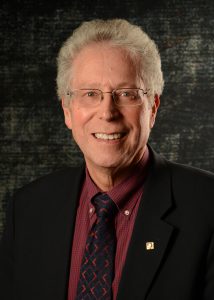Editorial
Monday Night Science
Connected Science Learning March 2016 (Volume 1, Issue 1)
By Dennis Schatz
CSL editor Dennis Schatz introduces the first journal dedicated to bridging in-school and out-of-school science education.
My dream—many would call it a fantasy—is that someday, science will be as pervasive in society as sports. We already have professional science, but imagine the day that we have extensive programs that feature intramural science, after-school science, and that pick-up science activity at the local park. Passionate amateur scientists will exist in abundance: more amateur geologist rock collectors, more amateur paleontologist fossil collectors, more amateur astronomers who write research papers with professional astrophysicists, and more citizen science projects that provide critical data to researchers.

And I’ll know when we attained this dream—when everyone has to rush home to participate in “Monday Night Science.”
Connected Science Learning is one step—a giant step, I hope—to getting closer to this dream. This journal features practices and research that connect STEM learning in classrooms with STEM learning that happens in the majority of our youths’ days, which is spent outside the classroom. The journal highlights our need to move from thinking about learning in siloed spaces and times to thinking learning is an ecosystem where all learning—not just STEM learning—is interdependent and linked. Two of the articles, “STEM Learning Ecologies: Relevant, Responsive, and Connected” and “Taking an Ecosystem Approach to STEM Learning: The Synergies Project as Case Study,” elaborate on this idea of a STEM Learning Ecosystem, which hopefully will soon become the way all educators—and the public—think about learning.
I hope you enjoy perusing the many efforts highlighted in this issue that show effective STEM learning in the Learning Ecosystem. Relationships highlighted include schools with ongoing connections to museums; after-school programing that links schools to a university, plus a Boys and Girls Club; and even a school located in a zoo.
In addition to the featured articles, Connected Science Learning has four special departments:
- Research to Practice, Practice to Research
Fosters a research-to-practice cycle that better connects practitioners to the growing research and knowledge base about STEM learning, and researchers to the world and needs of practitioners. - Diversity and Equity
Highlights connected STEM learning efforts that are effective at increasing participation and interest in STEM by underserved groups (e.g., minorities, low socioeconomic populations, rural communities, English language learners, special needs, and talented/gifted students). - Emerging Connections
Describes new, innovative connections between out-of-school STEM programs and preK–12 classrooms that have the potential to spread beyond the initial context. - Connected Science Learning Briefs
Short items that highlight the lessons learned, curriculum considerations, or research results related to the readers of the journal, or are short descriptions of resources (e.g., publications, videos, websites) of use to professionals interested in connecting in-school and out-of-school STEM learning.
I hope the articles in this issue, and in future issues, will provide models that inspire you to make connections in your community to take full advantage of the STEM Learning Ecosystem—and also get us closer to reaching my dream of “Monday Night Science.”
If you are one of those individuals who already made connections with other STEM-learning organizations, please consider submitting a contribution for future issues. The next manuscript submission deadline is June 30, 2016. More details are at www.nsta.org/publications/csl.

Dennis Schatz (dschatz@pacsci.org) is the Editor of Connected Science Learning and Senior Advisor at the Pacific Science Center in Seattle, Washington.


